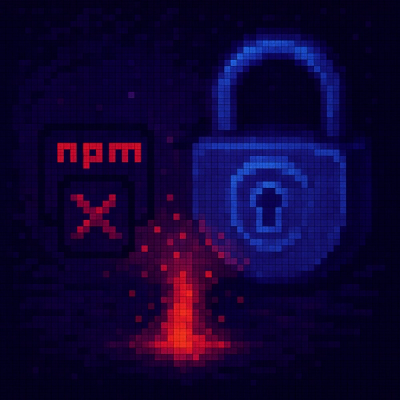Stream module for Socket.IO
This library is an update to the socket.io-stream node module. No code changes have been made,
but the debug module has been updated to avoid a security vulnerability in the existing project.

Requirements
Download and installation
npm install @sap_oss/node-socketio-stream
Known issues
Issues on the original socket.io-stream module (listed here) also apply to this module.
How to obtain support
This project is provided as-is. No new features or bug fixes are anticipated.
License
Copyright 2020-2023 SAP SE or an SAP affiliate company and node-socketio-stream contributors. See also the LICENSE file.
Usage
If you are not familiar with Stream API, be sure to check out the docs.
I also recommend checking out the awesome Stream Handbook.
For streaming between server and client, you will send stream instances first.
To receive streams, you just wrap socket with node-socketio-stream, then listen any events as usual.
Server:
var io = require('socket.io').listen(80);
var ss = require('@sap_oss/node-socketio-stream');
var path = require('path');
io.of('/user').on('connection', function(socket) {
ss(socket).on('profile-image', function(stream, data) {
var filename = path.basename(data.name);
stream.pipe(fs.createWriteStream(filename));
});
});
createStream() returns a new stream which can be sent by emit().
Client:
var io = require('socket.io-client');
var ss = require('@sap_oss/node-socketio-stream');
var socket = io.connect('http://example.com/user');
var stream = ss.createStream();
var filename = 'profile.jpg';
ss(socket).emit('profile-image', stream, {name: filename});
fs.createReadStream(filename).pipe(stream);
You can stream data from a client to server, and vice versa.
ss(socket).on('file', function(stream) {
fs.createReadStream('/path/to/file').pipe(stream);
});
ss(socket).emit('file', stream);
stream.pipe(fs.createWriteStream('file.txt'));
Browser
This module can be used on the browser. To do so, just copy a file to a public directory.
$ cp node_modules/@sap_oss/node-socketio-stream/node-socketio-stream.js somewhere/public/
You can also use browserify to create your own bundle.
$ npm install browserify -g
$ cd node_modules/@sap_oss/node-socketio-stream
$ browserify index.js -s ss > node-socketio-stream.js
<input id="file" type="file" />
<script src="/socket.io/socket.io.js"></script>
<script src="/js/node-socketio-stream.js"></script>
<script src="/js/jquery.js"></script>
<script>
$(function() {
var socket = io.connect('/foo');
$('#file').change(function(e) {
var file = e.target.files[0];
var stream = ss.createStream();
ss(socket).emit('file', stream, {size: file.size});
ss.createBlobReadStream(file).pipe(stream);
});
});
</script>
Upload progress
You can track upload progress like the following:
var blobStream = ss.createBlobReadStream(file);
var size = 0;
blobStream.on('data', function(chunk) {
size += chunk.length;
console.log(Math.floor(size / file.size * 100) + '%');
});
blobStream.pipe(stream);
Socket.IO v0.9 support
You have to set forceBase64 option true when using the library with socket.io v0.9.x.
ss.forceBase64 = true;
Documentation
ss(sio)
- sio
socket.io Socket A socket of Socket.IO, both for client and server
- return
Socket
Look up an existing Socket instance based on sio (a socket of Socket.IO), or create one if it doesn't exist.
socket.emit(event, [arg1], [arg2], [...])
- event
String The event name
Emit an event with variable number of arguments including at least a stream.
ss(socket).emit('myevent', stream, {name: 'thefilename'}, function() { ... });
ss(socket).emit('multiple-streams', stream1, stream2);
ss(socket).emit('flexible', [stream1, { foo: stream2 }]);
ss(socket).emit('ack', function(stream1, stream2) { ... });
socket.on(event, listener)
- event
String The event name
- listener
Function The event handler function
Add a listener for event. listener will take stream(s) with any data as arguments.
ss(socket).on('myevent', function(stream, data, callback) { ... });
ss(socket).on('foo', function(stream) {
if (stream.options && stream.options.highWaterMark > 1024) {
console.error('Too big highWaterMark.');
return;
}
});
ss.createStream([options])
- options
Object
- highWaterMark
Number
- encoding
String
- decodeStrings
Boolean
- objectMode
Boolean
- allowHalfOpen
Boolean if true, then the stream won't automatically close when the other endpoint ends. Default to false.
- return
Duplex Stream
Create a new duplex stream. See the docs for the details of stream and options.
var stream = ss.createStream();
var stream = ss.createStream({
highWaterMark: 1024,
objectMode: true,
allowHalfOpen: true
});
ss.createBlobReadStream(blob, [options])
- options
Object
- highWaterMark
Number
- encoding
String
- objectMode
Boolean
- return
Readable Stream
Create a new readable stream for Blob and File on browser. See the docs for the details of stream and options.
var stream = ss.createBlobReadStream(new Blob([1, 2, 3]));
ss.Buffer
Node Buffer class to use on browser, which is exposed for convenience. On Node environment, you should just use normal Buffer.
var stream = ss.createStream();
stream.write(new ss.Buffer([0, 1, 2]));



